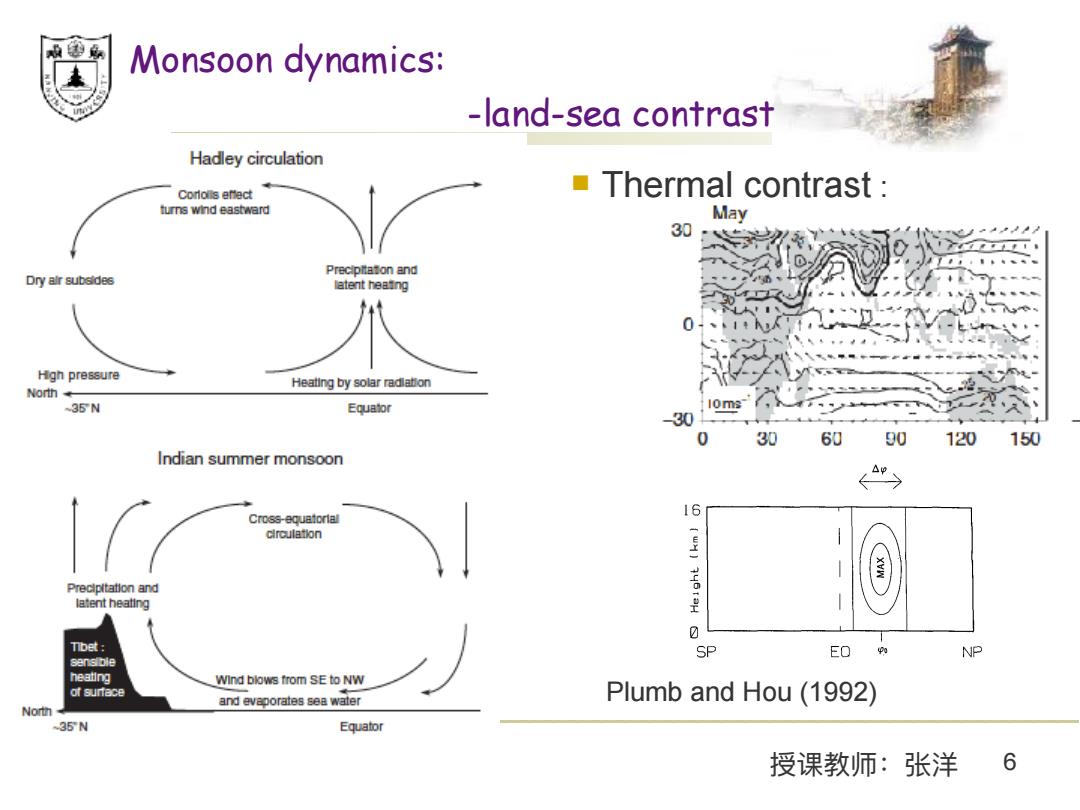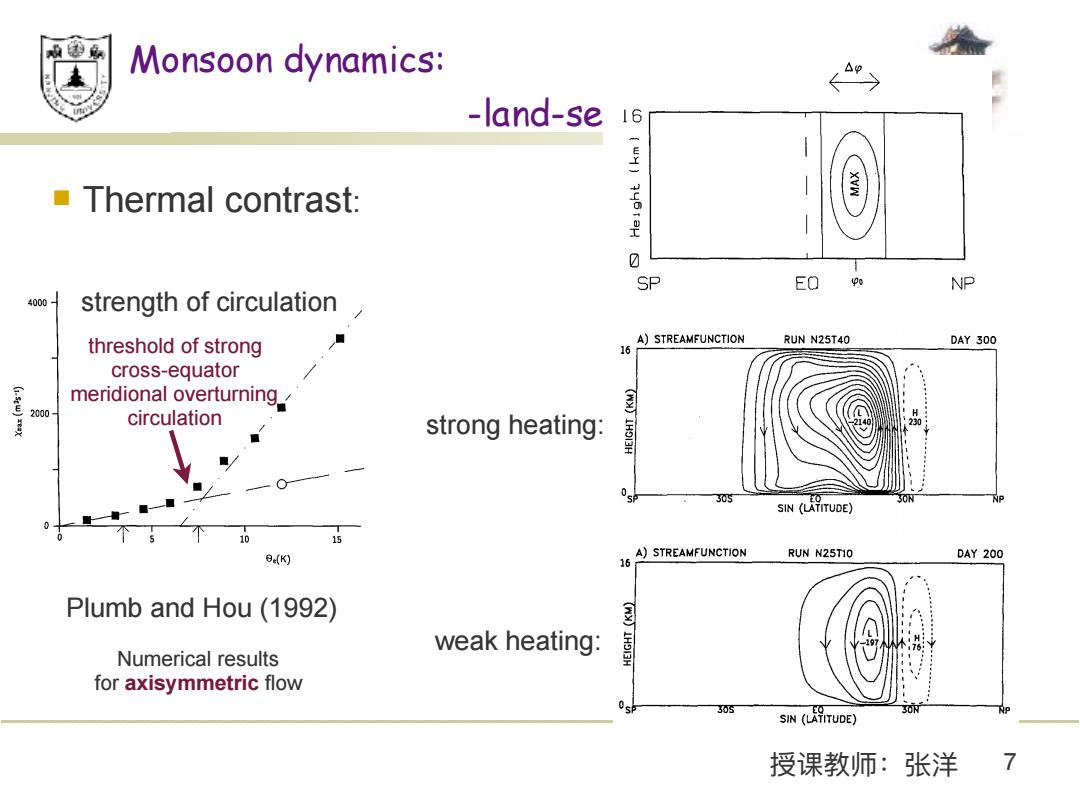
Monsoon dynamics: -land-sea contrast Hadley circulation Corors efect ■Thermal contrast: turns wind eastward May 30 Precipitaton and Dya时subside6 latent heatng Hgh pressure Heating by solar radlation North -36N Equator 10m3 30 30 6090 120 150 Indian summer monsoon Cross-equatorlal 16 ciroulation Preclpitation and latent heating 0 Tbet: SP EO NP sensible heating WInd blows from SE to NW of surace and evaporates sea water Plumb and Hou (1992) North -35N Equator 授课教师:张洋 6
授课教师:张洋 6 Monsoon dynamics: -land-sea contrast n Thermal contrast : Plumb and Hou (1992)

Monsoon dynamics: △p -land-se 16 Thermal contrast: 0 SP E0 NP 4000 strength of circulation threshold of strong A)STREAMFUNCTION RUN N25T40 DAY 300 16 cross-equator meridional overturning (WX) 2000 circulation strong heating: 30 SIN (LATITUDE) e.(K) A)STREAMFUNCTION RUN N25T10 DAY 200 Plumb and Hou(1992) (Nx) weak heating: Numerical results for axisymmetric flow 305 SIN (LATITUDE) 30N 授课教师:张洋7
授课教师:张洋 7 Monsoon dynamics: -land-sea contrast n Thermal contrast: Plumb and Hou (1992) Numerical results for axisymmetric flow weak heating: strong heating: threshold of strong cross-equator meridional overturning circulation strength of circulation

Monsoon dynamics: Orography,Tibet Plateau Orography (10**2 m) 60N+ 40N 20N 0 20S 40S 40E 80 (from Webster 1998) 授课教师:张洋 8
授课教师:张洋 8 Monsoon dynamics: - Orography, Tibet Plateau cross-equatorial flux of the Findlater Jet [Findlater, 1969b]. The remainder of the mass flux is associated with the rotational part of the wind field. Thus the mass flux associated with the Somalia Current in the ocean and the total mass flux of the atmospheric Findlater Jet are roughly equivalent. In the boreal summer the divergent longitudinal flow of the Walker Circulation is about half as large as either of the monsoon components. However, during the boreal winter the divergent mass flux of the Walker Circulation is of a comparable magnitude. Throughout the annual cycle the SST in the Indian Ocean undergoes an interesting progression. Figure 10 shows three longitude-time sections across the Indian Ocean for the year 1992. In the most general sense the SST maxima should lag behind the annual cycle of solar heating by about 2 months. However, a closer scrutiny of Figure 10 shows that this is not the case. The northern Indian Ocean (Figure 10a) remains warm throughout most of the winter, slowly increasing to a maximum of 30C in late June. Substantial cooling occurs in the vicinity of Somalia commencing in June at the equator and during July in the Arabian Sea. The cooling is associated with both upwelling and evaporation accompanying the freshening winds of the southwest monsoon [Knox, 1987]. The southern Indian Ocean appears to undergo a more regular annual cycle. However, the SST maximum occurs some 5 months after the southern hemisphere summer solstice. Furthermore, the maximum SST in the boreal winter actually occurs even farther south near 15S in the vicinity of 60E, where, during February, temperatures exceed 30C. However, during this season and at these longitudes, maximum convection occurs equatorward of the maximum SST because of dynamical constraints [e.g., Walliser and Somerville, 1994; Tomas and Webster, 1997]. Figure 11a displays the major orographic features of the eastern hemisphere. The Indian Ocean is bordered to the west by the East African Highlands and to the north by the Himalayas and the Tibetan Figure 11a.(a) Orography and the south Asian summer monsoon. Orographic structure of the eastern hemisphere (units are 102 m). The Indian Ocean is surrounded by the East African Highlands to the west and the Himalayan Mountains to the north. Australia, on the other hand, is devoid of major orography. Orography with elevations >1 km are shaded. . (from Webster 1998)